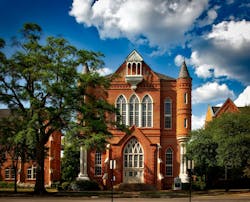Higher education construction costs for 2023
Colleges and universities manage more than 6 billion square feet of campus space in 210,000 buildings nationwide, with a replacement value of $2 trillion and a backlog of urgent capital renewal needs exceeding $112 billion.
The state of campus facilities will define the financial future of higher ed institutions more than any other single factor. Data collected from a thorough assessment of campus conditions should be used to prioritize building portfolio needs and establish a strategic framework for linking today’s investment realities with future campus aspirations.
Readying campus facilities for future students can take the form of renovations, updates or wholesale replacement, with the driver of that decision based in the alignment of available resources with institutional programmatic priorities.
As North America’s leading construction cost database, Gordian’s RSMeans Data has been synonymous with reliability since the 1940s, so you can trust it when budgeting for projects that will transform your campus for students, alumni, professors and staff.
With localized square-foot costs on over 100 building models, Gordian’s RSMeans Data allows architects, engineers and other preconstruction professionals to quickly and accurately create conceptual estimates for future builds. This table shows the most recent costs per square foot for two-story college classrooms in select cities, with sustainable, “green” building considerations.
Visit rsmeans.com/bdandc for more information about Gordian’s RSMeans Data.
Please note: Square foot models are used for planning and budgeting and are not meant for detailed estimates.
